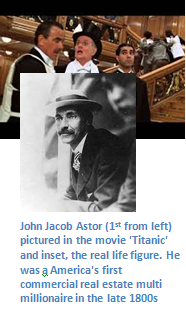|
-by Vikram Afzulpurkar  They say that assembly line production really started with Henry Ford’s motor company. So effectively though arguably this pioneer invented the assembly line and suddenly cars, which in the 1890s to 1910 were affordable only by the mega rich, became available cheaply. Can the same happen with pre fabricated houses? There is a strong possibility yes. Pre fab houses are special dwelling types of prefabricated building, which are manufactured offsite. Here, sections of a house are already made and merely need to be fitted in. It of course is a cliché to say that the product is produced on an assembly line. So, while time is hugely saved, there is no doubt that the convenience for all layers of ‘players’ in “construction” is a lot. Currently, if you as a buyer view this so called “market of convenience” which will emerge soon, the obvious advantages are:
To maintain a low budget, gypsum walls and roofing boards with window cut-outs were bought readymade from Cochin. Concrete filling made inside them ensured the house was burglary proof. Instead of spending about 20 lakhs on a steel and concrete construction, Adiga saved about 35 per cent! Technology available today can help nullify fungus and make it the material water proof. To give you a sense of firsts, the first pre fab house in India was built in Coimbatore. So it’s a practical solution that someone even in a relatively small town like Coimbatore saw fit and not necessarily an experimental idea of modernist thought from mega cities like Bengaluru, Mumbai, Delhi and Chennai. Therefore the pre fab home is a larger category of technology to finish a home, which consists of having readymade sections of a house. Progressively from supplying smaller components to larger components, these dwellings can claim to be pre fab:
Soon to come to India? We sure hope so! Get ready to welcome the future. Pre fab may stand for pre ‘fabulous!’
7 Comments
 Remember one of the lines in the classic movie and true story ‘Titanic’ where the lead Kate Winslet introduces the runaway Leonard Decaprio to various tycoons in the first class section, “... and Jack, there’s John Jacob Aster, the richest man on the ship.” Well, John Jacob Aster was America’s first millionaire through commercial real estate in Manhattan. Commercial real estate has been a number 1 investment choice from the 1800s and has particular benefits in today’s dynamic marketplace. However, since 1800 the scope of commercial real estate has changed drastically! Today, in that segment you have not only office spaces, and shops, but also warehouses, malls, hotels and student housing, to name a few. The reason why commercial spaces are not as popular an investment as residential among retail investors, is that its not so much “in your face”. You don’t hear radio ads about commercial spaces, you don’t really see billboards or even Google ads about them, and you can guess why. The best investments are usually invested in by the world’s top and biggest investors. No one is trying to sell these to smaller investors. It’s an easy sell. While we all agree that a property has two gains i.e. appreciation and rental yields. Sure, residential property in Asia has higher appreciation but in terms of rental yields, commercial property scores much more at 10% versus the former’s 3%. Office space vacancies in places like Bengaluru are extremely low at 3% whereas rental yields are in the range 9-10%! Coupled with appreciation, this is an excellent buy! The recent e-commerce boom has resulted in a huge demand for warehouses. Moreover, with industries increasingly moving to an import model from low cost countries where labour is cheaper and more easily available, the demand for industrial warehouses goes up. Currently, the vacancy rate in industrial warehouses is only 4 to 6%, whereas shop buildings is 13%. The other two segments that are gaining traction are hospitality and student housing . Models like AirBnB and bachelor/student housing across the world, in today’s “sharing” economy, have created a lot of investment opportunities. So, as an investor, it might be worth your while to look beyond the obvious, and research and pick an investment that will give you the return you actually want. For a more detailed discussion on this, do drop us a line. We always love a friendly chat. -Vikram Afzulpurkar @ PropertyAngel |
Archives
July 2024
Categories |

 RSS Feed
RSS Feed